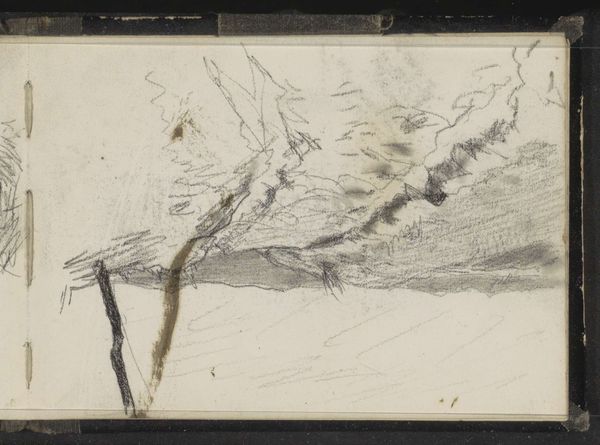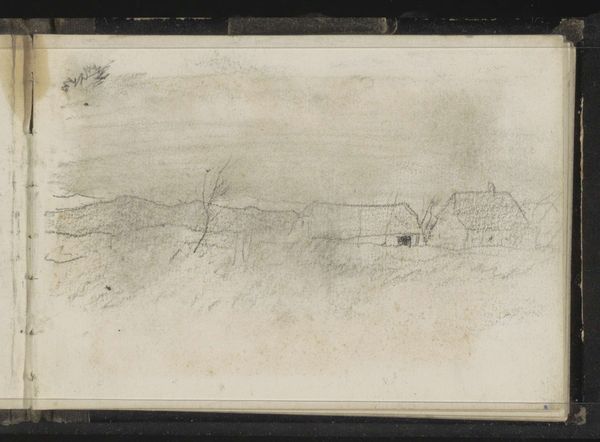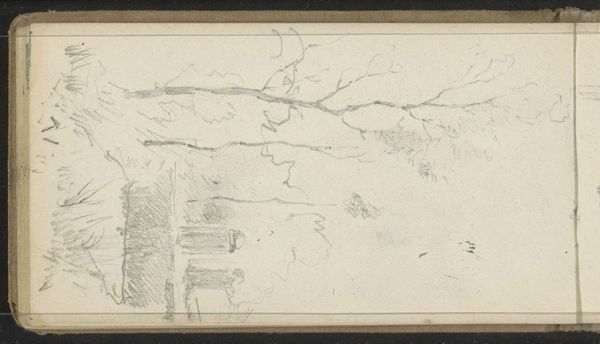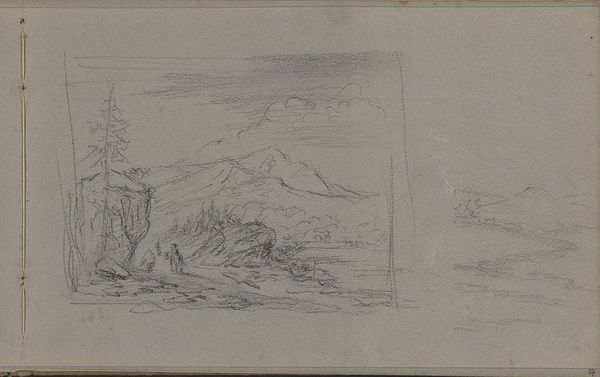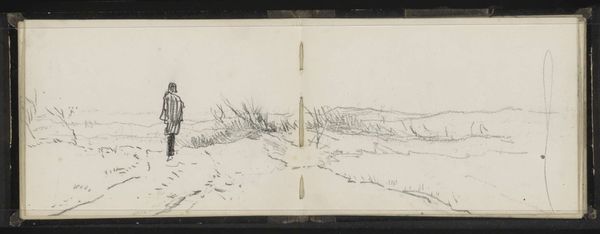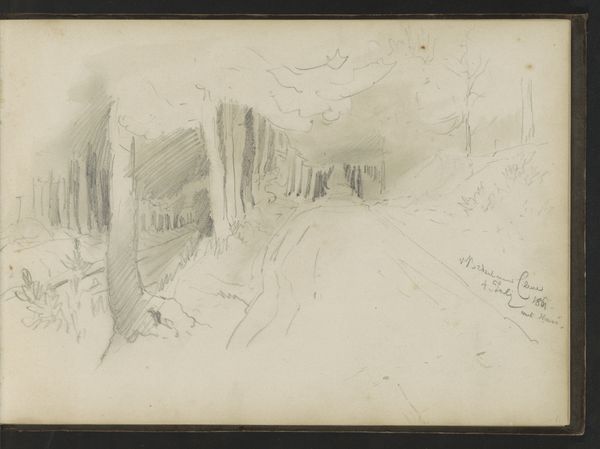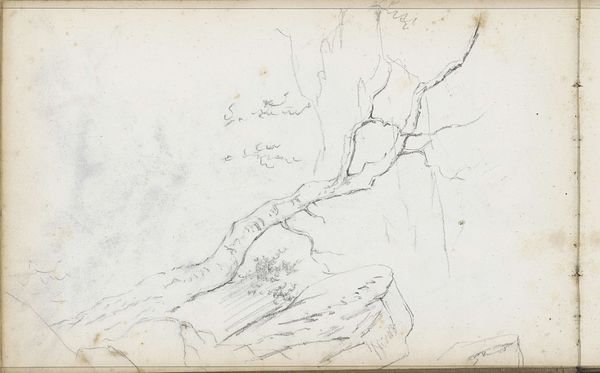
#
amateur sketch
#
toned paper
#
quirky sketch
#
incomplete sketchy
#
personal sketchbook
#
sketchbook drawing
#
watercolour bleed
#
watercolour illustration
#
sketchbook art
#
watercolor
Copyright: Rijks Museum: Open Domain
Editor: We’re looking at "Landschap met bomen langs een hek," or Landscape with Trees Along a Fence, an 1848-1888 work by Anton Mauve, housed at the Rijksmuseum. The materials seem to be graphite and watercolor on toned paper. It feels very immediate and intimate, like a glimpse into the artist's sketchbook. What do you see in this piece from a formalist perspective? Curator: Indeed. What immediately strikes me is the emphasis on line. Notice how Mauve uses primarily linear strokes to define form, eschewing a dependence on shading or chiaroscuro. The varying density and direction of these lines create texture and suggest depth, particularly in the depiction of the trees and the fence. Editor: It is interesting how simple the rendering is of the figure standing to the side. Curator: Precisely. The figure, barely articulated, is rendered subservient to the linear scheme of the fence itself, and contributes a geometric anchor that sets into relief the organic density of the foliage behind it. It functions as a hinge connecting horizontal, central field and the gestural elements beyond. Consider too the way the limited palette contributes to the overall impression of unity and constraint. Editor: I see how the lines interact and almost vibrate on the page, a stark and lonely depiction. It looks simple, but now I recognize how carefully orchestrated these seemingly simple marks must have been. Thanks for your thoughts. Curator: A stimulating observation. Reflect on how even "incomplete" lines engage one another to yield something quite moving.
Comments
No comments
Be the first to comment and join the conversation on the ultimate creative platform.
